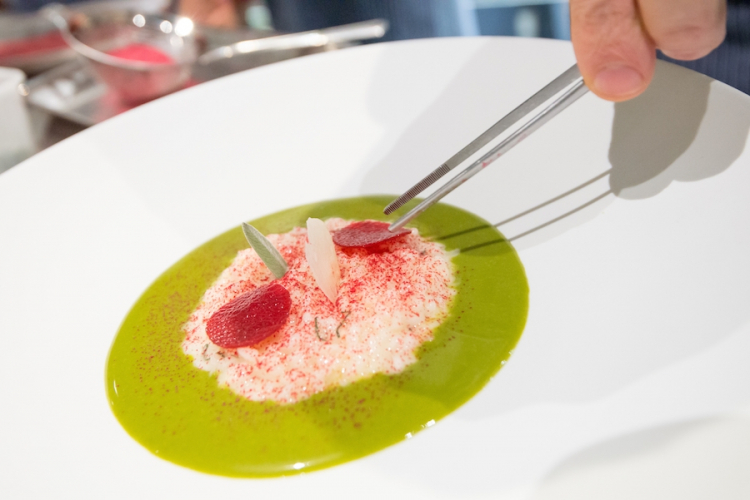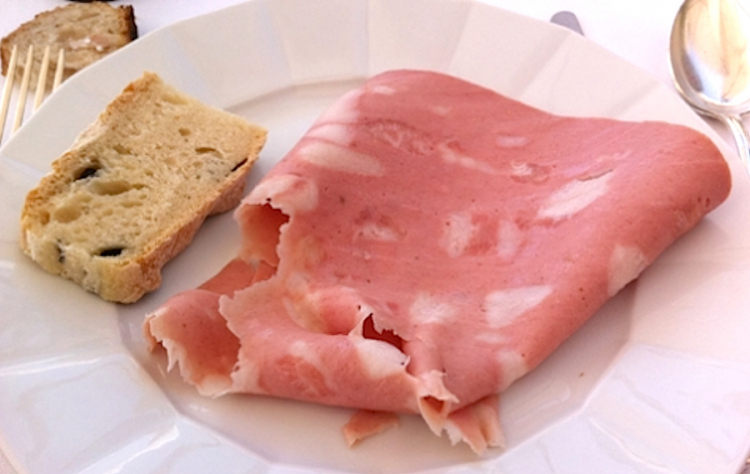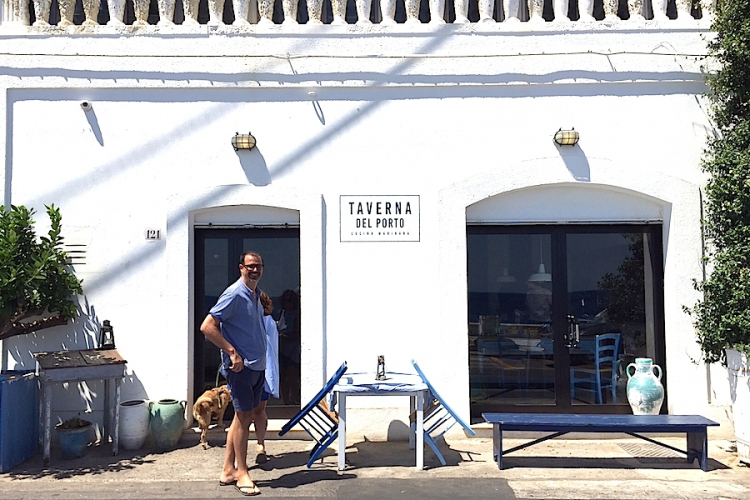Tricase, some 50 km after Lecce, going to Capo di Leuca, has three excellent cooks. Two of them, Imma Pantaleo and Ippazio Turco, have basically never left town. The third, Antonio Guida, left immediately. And not just because he attended catering school in Santa Cesarea Terme. Born in 1972, he had a strong desire to learn, he had curiosity and appetite, he wouldn’t be satisfied and wanted to travel because sacrifices are sometimes due to circumstances that are independent of us: «I love cooking. I’m on holiday now, I’m happy, but I miss cooking. That’s where I express myself».
Since two years ago Guida is at Seta, the restaurant inside the Mandarin Oriental in Milan. Before, he delighted guests at Pellicano in Porto Ercole, Tuscany. There was a time, ten years ago, when young cooks were working there who are now starred, starting from Sebastiano Lombardi, born in 1976 in Andria, Apulia, who returned to Pellicano in 2016 to replace him. Then there was Salvatore Bianco, who’ll turn 40 in 2018, born in Torre del Greco, Campania and now praised at Comandante inside hotel Romeo in Naples. And William Zonfa, the youngest, born in 1981 in L’Aquila, who has been working for over five years at Magione Papale in L’Aquila. Even Nino Di Costanzo, born in 1972 like Guida, spent a short time there. He also had some future talents in his restaurant in Ischia, when in the days of Terme Manzi. Many happy threads intertwined.
Getting Antonio Guida to talk isn’t easy. He’s the kind of person who pays more attention to facts than words, especially pointless ones: «The most important gift for someone in my profession? Passion and curiosity. If you lack either of them, it’s best to focus on something else».

Riso in cagnone by Antonio Guida, chef at Seta inside the Mandarin Oriental in Milan
«Build your foundations at catering school. We can have all sorts of doubts on the Italian education system but too many chefs have not attended catering school and you can tell immediately».
How about the second?
«Acquire experience in important restaurants, first in Italy, then abroad, in Spain, France, England. Unfortunately many today skip working in Italy and go abroad directly. It’s a mistake: a guy from the south should know the cuisine of Tuscany, Lombardy, Piedmont, in depth… and one from the north should know at least Sicily and Campania».
A twenty year old in the Nineties and today.
«We respected the giants of the time, we washed plenty of dishes and dirty pots. Today they no longer do so. I don’t even ask. But I believe young guys are now more prepared and on the ball, they are even better informed, thanks to the Internet. You just have to use it right».
Which are the not-to-be-missed steps to become chef?
«First step is garde-manger. You become familiar with cold by cleaning fish and meat. And you gradually grow. A period in pastry making is also essential because it forces you to be precise. I found it easy because as a kid I wanted to become a pastry-chef, not a cook. I would go to Raffaele Bello in Galatina – he was pastry-chef in Buckingham Palace in the Sixties. He welcomed me at home on a Saturday and Sunday. I had a fixation on desserts. At Pierre Gagnaire’s I’d spent my two hours of free time in the dessert department. Unfortunately getting there was very difficult so in the end I became a chef because they told me I was good in the kitchen and there was no point in changing then».

Mortadella Pasquini, summer of 2011 at Pellicano in Porto Ercole. Antonio Guida was the chef
«Not less than ten years. There’s no meaningless step. Including being a saucier, even though these days some snub sauces. It’s a question of learning all the time. There’s never enough».
Once chef, what is the essential rule?
«Only think of clients. If they return, it means they appreciated. You shouldn’t serve food for few, but always have a full restaurant. One day, at an event, a colleague presented a lamb skull with some excellent foie gras processed with ants and worms. What’s the point? I believe these dishes push away people from fine dining».
How do you approach a twenty-year-old, the client of the future?
«With special moments, like a discount for the chef’s table».
You and hotels. First Pellicano, now Mandarin.
«I’ve acquired a deep knowledge of hotel catering, which is very rich and complex. Just think that in Milan there are 35 cooks, of which 12 at Seta. We range from roast chicken and potatoes for the room service staff, to the bistro and the starred menu».
The secret not to be overcome?
«Serenity. Never take yourself seriously, and leave no space for performance or “star” anxiety. For someone who spends 14 hours at the Mandarin, this job must be fun. I’ll tell you this: we opened in Milan at the end of July 2015 and the closer the Michelin Guide presentation got, the more the guys expected to debut with two stars, like at Pellicano. When the Red Guide reserved a dinner at Seta for the press with director Michael Ellis, they were sure. Mid December comes, there’s the dinner, and the following day the guide is out: one star. I was happy, I was afraid they’d just mention us, given we had just opened. It was an excellent start. At the end of the presentation I called Federico [Dell’Omarino, his sous chef since the start] to tell him I was coming back and he said: chef, everyone here is in tears. I had to speak with each one and motivate them. These situations build the group».

A moment of relax for Antonio Guida this summer at Tricase Porto in Salento. He’s about to enter Taverna sul Porto
«Totally by chance. I was working at
Eden in Rome, an important time of growth, over fifteen years ago. In order to earn some extra money, on Sundays I would cook in a small place that on other days had a completely different menu but where they allowed me to be myself once a week. The owner of
Pellicano happened to come, she liked my food and for three times she invited me to work for her. The third time I said yes».
Do you miss something from Pellicano?
«Pasquini’s mortadella. We served it at breakfast. Their production is small and to have it in Milan I must wait for a client to back out».
Translated into English by Slawka G. Scarso